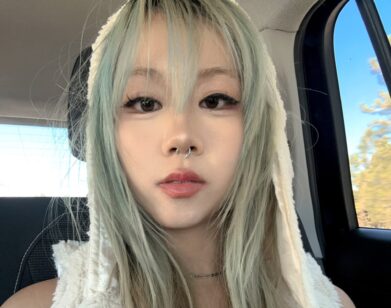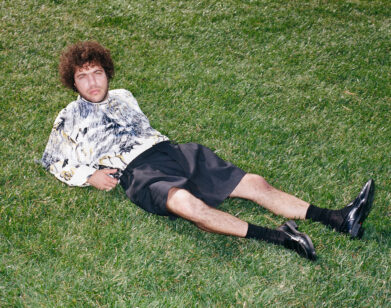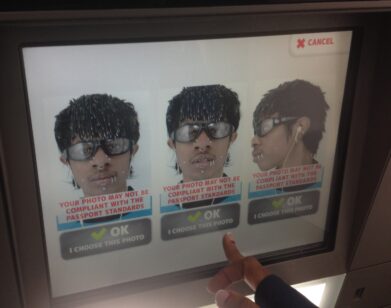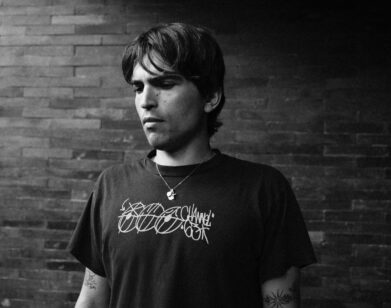The Ting Tings’ Dispatches from the Edge
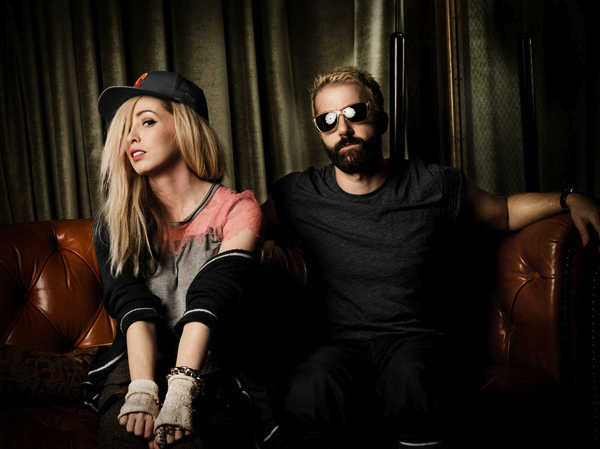
PHOTO BY CHRISTOPHER GABELLO.
It’s been a while since we last heard anything from Manchester-based Katie White and Jules de Martino, who together make up The Ting Tings, but now they’re back with their second album, Sounds From Nowheresville. The band that’s famous for hits like “Shut Up And Let Me Go” and “That’s Not My Name,” has put their undefinable sound to the test on their latest record. The band’s very DIY nature is also represented through their (creepy but cool) album cover art, which was designed by Milan Abard. The Ting Tings had designed their first record’s art themselves, but this time around, wanted to involve other talented people, too—The Ting Tings have a profound appreciation for other creative minds and their supportive fans. Their second album—which explores a variety of punkier, edgier sounds compared to the first, without sacrificing the band’s signature catchiness—is worth the wait.
We chatted with singer Katie White about scrapping the band’s songs, not fitting in, and being okay with uncertainty.
ILANA KAPLAN: How does it feel to come out with a second album that is drastically different from your first?
KATIE WHITE: I don’t know. I don’t think it is. I think it’s more experimental. We did it as like a concept, where every song sounds different than the other. That kind of makes it sound different. I still think that it still sounds like us because we also wrote and recorded everything ourselves, so it’s not like we went in with a producer that morphed us into a different band. We’re kind of a weird band anyway, where we never fit in with indie or pop. We never really sat with either of those genres fully. I think it’s kind of like that on this album.
KAPLAN: I read that you guys had tracks laid out for this album, but you scrapped them after approval from the record label. What caused you guys to do that?
WHITE: We kind of worked that way on the first album, where we ruthlessly deleted something as we didn’t like it. What happened was, our label meant really well. We were successful in a lot of different countries, so lots of people from the labels from over the world wanted to come to the studio and listen to what we were doing. It was kind of our fault, really, because when we wrote our first album on our own in Manchester, we really didn’t show it to anyone. Then, you get 20 people in, and you’re halfway through a song, they tell you they love it and they leave. Then you finish the song a week later. You don’t know whether you like the song because you like it, you’re proud of it and you feel like it’s you, or whether it’s because they’ve told you that they like it, so that your opinion of your own music gets a bit messed up. We knew that wasn’t a good place to be. We wanted to make sure that with our second album that it meant something with us. We wanted to delete some songs, go to Spain, and really isolate ourselves. We found a place where we could be completely on our own, form our own opinions, enjoy writing our songs, and make the album we wanted to make, which is what we did. It just took a while.
KAPLAN: After the success of your first single, “That’s Not My Name,” how do you feel about making this album and meeting those expectations again?
WHITE: In all honesty, we never tried to get the number-one song anywhere anyway. On the first album, six months before we started The Ting Tings, we had been signed and dropped by our record label in our previous band. We had kind of given up on being successful. It’s amazing. It’s lucky, but I think you’re in the wrong kind of mental state if you’re writing an album trying to have big hits, because you’ll constantly be listening to the radio trying to write songs that fit on the radio so that they get played, and [you’re always] too late. Six months later, something else new happens. You’ve been chasing the people’s creativity. We 100 percent did not want to do that. I think the best thing for us is to just write songs that we like. Because we did that on our first album, and people around the world liked it; people hated it and they liked it. It’s something that we just liked ourselves. I think that’s probably the best thing to do for us: to make music that we like.
KAPLAN: Can you tell me about the cover art of your new album?
WHITE: We did our first album cover ourselves. We were inspired by a lot of the artists and a lot of the people who are our friends where we lived in Manchester. We lived in an old cotton mill that had forty artist workspaces. Somebody next door to us would be a ceramicist and the person in the door across from us would be a clothes-maker or a basket-designer. We didn’t go back to Manchester to make our album, but we didn’t want to particularly go to our record label and kind of go, “Hey, can you help us do our album cover?” They generally just use the same one or two people for every band. That’s not really our thing. We did a tour of the UK where every city we performed in, that day, before the show we would go into the art college. We would sit with the students, play them our music, and see what they were doing. We told them they could submit any work if they wanted to. The album cover was designed by an artist called Milan Abad. We just looked at it and we thought that it really summed up the album title. It was really beautiful. It’s hand-drawn and painted.
KAPLAN: It’s really great that you guys involved your fanbase. You’ll be touring with MNDR in the States. Who are some bands that you think would complement your band well on stage?
WHITE: I think MNDR was a good choice. We got offered loads of bands to be our support band. We instantly knew with her that she was the perfect fit and that our audience would really get off on her. We really like an artist called tUnE-YarDs. She uses loop pedals on stage, and we use them. We saw her perform in Berlin a year ago, and she was amazing. I’m a big fan of Lykke Li. It would be good to tour with her and see her perform.
KAPLAN: How did you come up with your album title, Sounds From Nowheresville?
WHITE: It was kind of where we had to end up to feel like we were inspired to make our second album. We made our first one really naively. We didn’t want to just write a second album because we thought had to and that’s what bands do. We didn’t know whether we wanted to split the band up, make videos, paint pictures, or make clothes. We ended up going to this little town in the middle of nowhere in Spain and got really inspired to write our second record. It took six months to a year to get to that place: to feel like we had something to say again. When things are going well, you kind of end up feeling like you have nothing interesting to say apart from “I’ve slept on airplanes and had a really great time,” which is never interesting material to write songs to. I think it kind of means where we ended up making our second album. I also think it kind of means what kind of band we are. On the first album and on the second album, we don’t particularly fit in the indie world, even though we do everything ourselves like most indie bands do. [With] songwriting, producing, and making our own videos, we really hold our own. We kind of write pop songs, but we don’t fit in the pop world. We’re really bad at being pop stars and walking down red carpets. We’ve got our own little bubble, which we really like. We’ve learned to really like that. We think Sounds From Nowheresville encapsulates that.
THE TING TINGS’ SECOND ALBUM, SOUNDS FROM NOWHERESVILLE, IS OUT NOW. FOR MORE ON THE BAND, VISIT THEIR WEBSITE.

